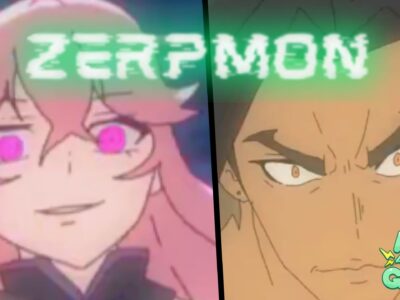
[ad_1]


It’s The Adventures of Superman when he was a boy (err young man?) in issue #501.

The Adventures of Superman #501
Triangle Number 1993 – 15
Writer: Karl Kesel
Penciler: Tom Grummett
Inker: Doug Hazlewood
Colorist: Glenn Whitmore
Letterer: Albert de Guzman
So every fan who was following along with the books as “Reign of the Supermen” launched had their favorite Superman, the one that they supported more than the others. Shockingly, as a 9-year old, I immediately glommed onto the star of Adventures of Superman. It was 1993, teenagers with attitude were all the rage, and Superboyman was no exception. He was just incredibly cool and I wanted to be as cool as him.
Part of the draw of the Metropolis Kid was that unlike a lot of his peers in the industry, Tom Grummett draws a believable teenager. The kid actually looks younger than the other Supermen and is noticeably younger than Grummett’s own renditions of the Man of Steel as well. The thing about the Superman books at this point in time is that it becomes very obvious which artists can and can’t draw a teenager, since the Kid will show up in every other book at this point in time. It was between this series, Robin, and the eventual Superboy series that Grummett cemented himself as my first favorite penciler, though I didn’t really know what that was for quite some time yet.
Another contributing factor to my love of the Kid would be incoming writer Karl Kesel. Kesel comes on to the book after having been an inker on Superman during the Byrne days and writing and drawing several backup stories over the last two years of the titles. Kesel would write Adventures of Superman for most of the next five years, as well as writing most of the first three years of Superboy when that title launched. To say that he’s the definitive writer for the character would be an understatement.
Oddly enough, the only one of our four Supermen who didn’t get a full-page splash for a reveal in their introduction turned out to be the first one introduced: The Last Son of Krypton. The other three all get fantastic full pages to showcase the new looks and designs, and all work to wonderful effect. In the Kid’s case specifically, he rescues a jogger from getting run down by a stolen taxi cab, but not before making sure to grab her right by the butt. The one thing that’s not ever really clear about this opening scene is the motivation these men have for trying to run the woman down. They were just doing a joy ride and decided to commit vehicular homicide just on a whim.
Just the first three pages that introduce the kid do so better than any of the other introductions. Grummett and Hazlewood dynamically show off his powers, while Kesel writes him with the perfect brash and showboaty attitude. He takes the sunglasses off one of the crooks and then steals a kiss from his damsel before jetting away. He’s the picture of a reckless youth, all swagger and no maturity.
It’s here where the subplot finally checks in with local Sooperman, Bibbo Bibbowski. He’s seriously doing the best he can to live up to Superman’s ideal, even if his brain isn’t always caught up with his big heart. He’s handing out sandwiches to the needy, even if they’re sealed with saran wrap and staples, and when he finds out that an old woman had thrown puppies into the river rather than let them starve, he dives in to rescue them. Only one of the puppies survives, and Bibbo takes it in, set to name him Krypton after his fav’rit.
And now after meeting two of the other Supermen, Lois gets a close encounter with a third, as she arrives at the Daily Planet to find the Kid sitting at her desk with his feet propped next to her keyboard. It’s here where we first really see the Kid’s distaste for the moniker Superboy, as Jimmy Olsen doesn’t even finish his sentence before the Kid has him upside down in mid-air like a middle school bully. While he can’t convince Lois of his legitimacy, he does convince wannabe reporter Tana Moon, who gets an on-air exclusive revealing that he’s a clone of Superman for GBS.
One of the most notable things about the Kid during this era is that to sate his very big ego, he was willing to believe almost anything, and was always willing and ready to showboat. Whereas Clark Kent became a journalist to hear about events where he could save people, the Kid is a reality TV superhero in the dawn of the reality TV age. The kid was a personality that could have come right out of MTV’s The Real World.
And while his personality doesn’t really match that of the man he is a clone of, there’s a good reason for that, as Lois explains when she calls the Kents. The reason Clark was the person he was was because of the morals that the Kents had instilled in him. This kid did not have those same lessons, he was grown in a vat, never had a childhood, never got taught right or wrong. He’s acting on hormones, ego, and instinct. He’s still mostly doing the right thing, but he’s going to slip every now and then, and that’s okay.
The issue ends with Luthor confronting his mole within Cadmus, a man who told him that all attempts to clone the man of steel had failed. But obviously, one attempt seems to have made it through, but not to the extent that everyone thinks, as Packard begins to spill his guts to Luthor.

Now that we’re done with the four introductory issues, there’s one last thing to touch on with the direct market editions of the four issues. As previously stated, they were all card stock covers with die-cuts revealing each Superman’s symbol, that when you opened you got a portrait of that Superman. This meant that you also had extra cover space on the back cover since the ads that would normally be there got placed on the regular interior cover. What the issues did instead was to put a greyscale of the lineart to the next issue on the inside back cover, and on the outside back cover were the other three Supermen’s interior covers to showcase the rest of the heroes.
Miss any previous entries in The Never-Ending Battle? The early entries can be found at Comfort Food Comics, while more recent ones can be found here at The Beat.
Related


[ad_2]





